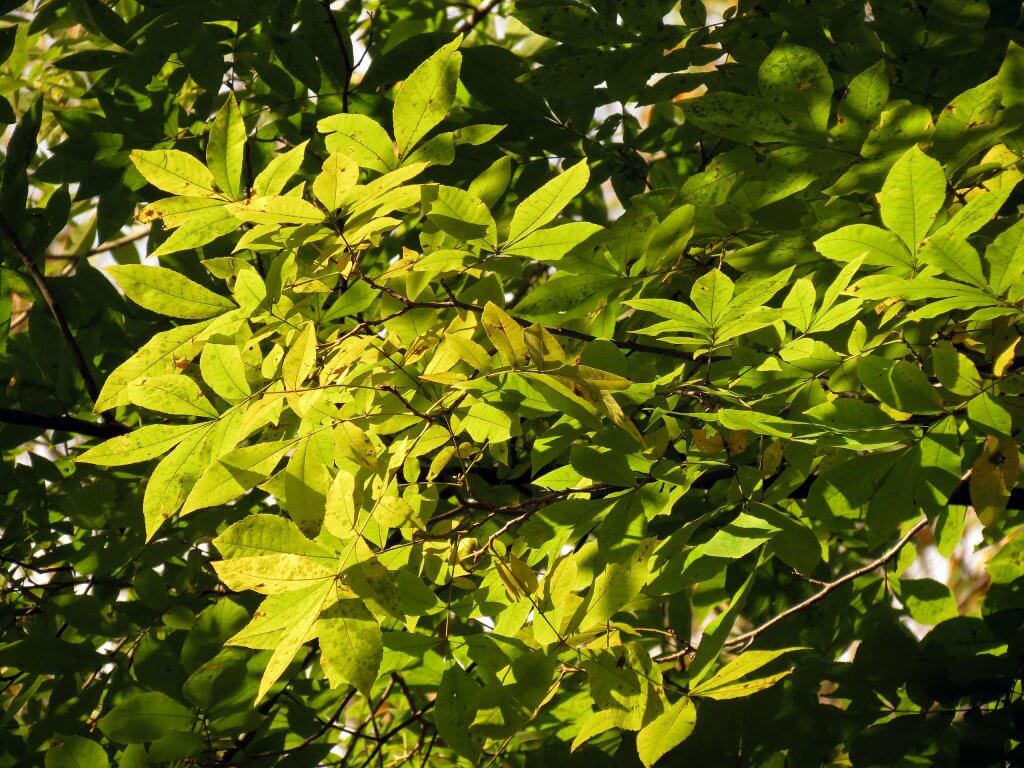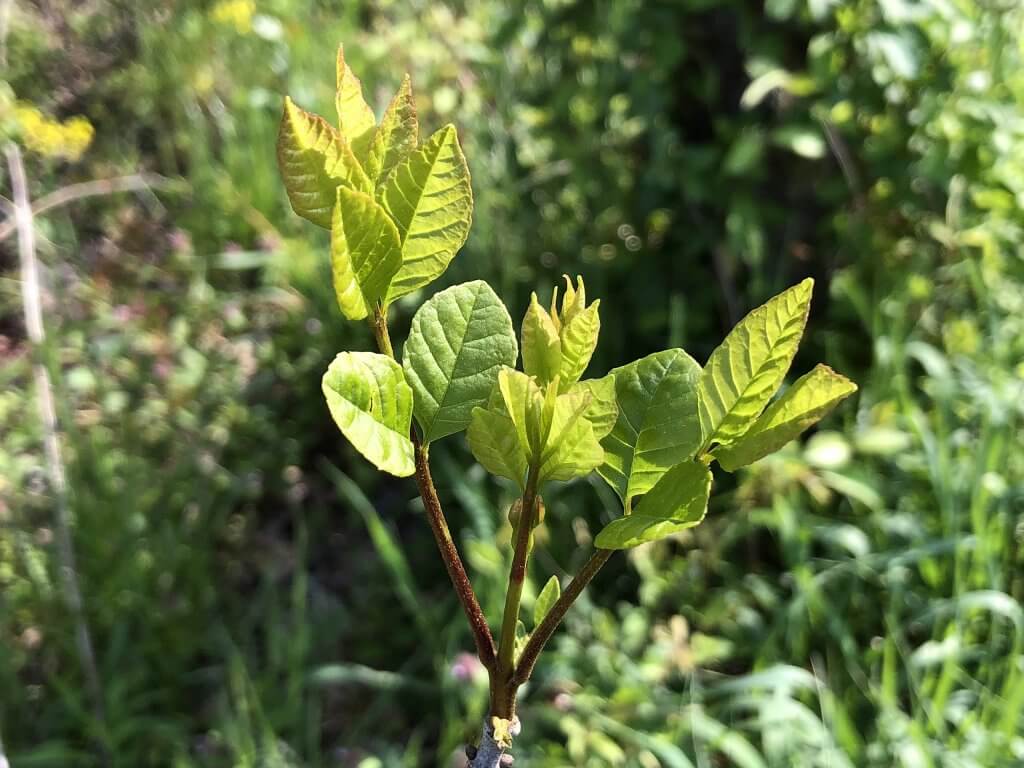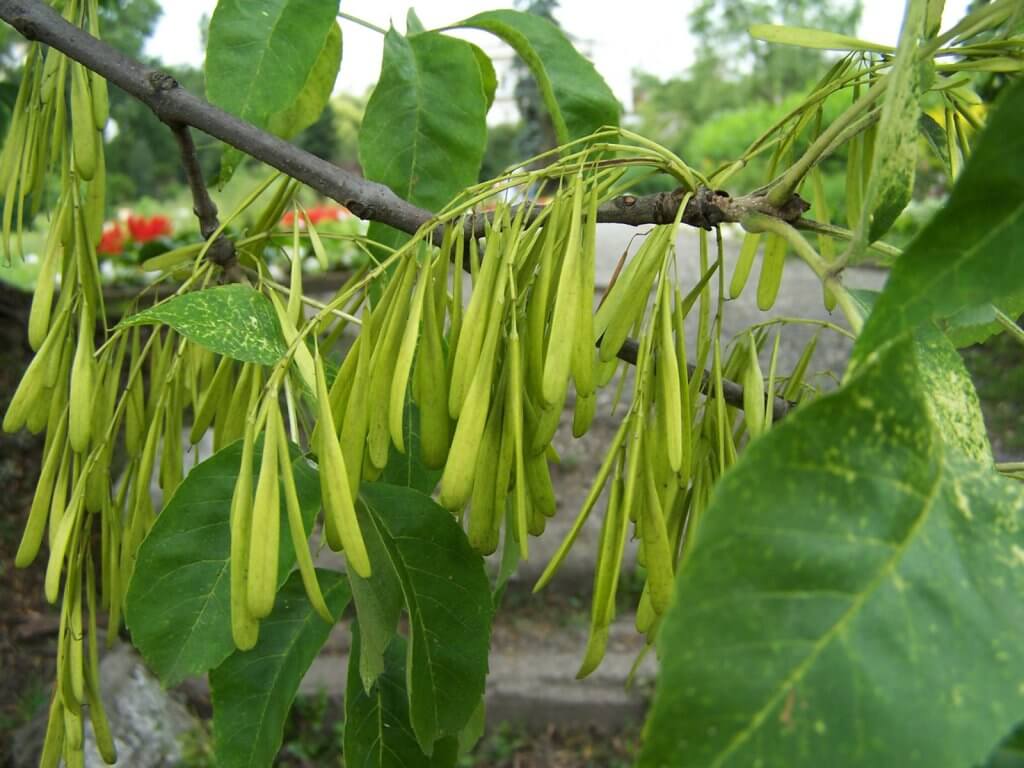Ash (Fraxinus spp.), refers to a collective genus of large flowering, deciduous trees. They can be found throughout the world, with a great number being native to North America. The white ash (Fraxinus americana) and green ash (Fraxinus pennsylvanica) are the most prolific ash species in the northeastern and midwestern states. Whilst the blue ash (Fraxinus quadrangulata) resides mainly in the midwest. Each of these species are currently listed as critically endangered, so any foraging must be carried out with the utmost care.

Ash trees can reach heights of up to 25m, their size and stature making them a popular choice for public urban gardens. The deep red/black buds at the end of branches begin to form subtle green to purple flowers as spring sets in. The leaves are lightly toothed, pinnate and simple, appearing opposite one another on the main leaf stem. The fruits are commonly called ‘keys’, although their official scientific name is a ‘samara’, much like the maple and birch. The small winged keys are usually 4cm long and 1cm wide. They each contain a single seed, and cluster together in dense bunches.
Edible parts and other uses
The long petal shaped fruits and the very young shoots can be harvested and eaten each spring. These can be added raw straight into a salad, however they will have a better flavor when cooked through. Added to soups, a stir fry or other hot dishes they add an interesting leafy green with a soft bite.
Another popular use for the fruits is to create a jar of pickled ash keys. This makes an excellent accompaniment to a salad, or as a general condiment.

The wood of the ash tree has been used for centuries for its durability and straight grain. Today it is commonly cultivated for use in furniture, flooring and even baseball bats and guitars.
The ash tree also has a history of use in herbalism. From treating leprosy, fevers and even obesity, although there is currently little evidence to support any of these treatments.
Cautions
Ash keys do have some astringent properties, so they should not be consumed in great quantities for long periods of time. The keys are very distinctive, and considered safe for beginners to forage.
Foraging
Look for ash trees, in deciduous woodlands and forest edges and even your own plot of land. Depending on your location you may come across a number of different species. The white ash tends to favor forests that contain sugar maples, whilst the green ash is likely to dominate areas of disturbed land in-between rivers and fields. However all fruits of the ash tree are edible. These small fruits form in spring so this is the best time to begin foraging.
Make sure to pick the fruits before the seeds begin to fully form. The younger the fruits, the more improved their taste and texture will be.
Due to their endangered status, foraging should be carried out in a careful and sustainable manner. Make sure not to over harvest the fruits so as to allow new trees to take seed.

Did you know…
Ash trees have become critically endangered because of an invasive insect pest called the emerald ash borer. A beetle with a deceptively beautiful iridescent casing, but a deadly blight for the mighty ash tree. Originally native to Asia, this beetle has sadly spread into North America and Europe where it wreaks havoc on native ash populations that have not evolved to deal with this invasive pest.
Conclusion
A majestic native species, ash trees are versatile and a wonderful wild edible. After foraging some of the seeds you could consider growing your own. They are frequently chosen as an ornamental tree, and planting additional trees can aid in recovering their population numbers.
—————Written by Hannah Sweet
Hannah is a freelance writer and graphic designer from the UK. With a penchant for travelling, photography and all things botanical, she enjoys writing about a wealth of topics and issues, from conservation and slow living, to design and travel. Learn more about her writing and design services at www.sweetmeanders.co
Many of our readers find that subscribing to Eat The Planet is the best way to make sure they don't miss any of our valuable information about wild edibles.
See our privacy policy for more information about ads on this site







One Response
Thank you for the great piece on Oregon Ash